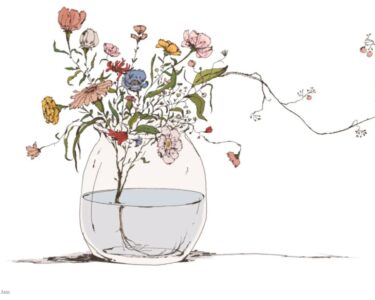Classical Indian dances connect American-born generation to their roots
By Carrie Seidman
When Sarina Sallapudi was assigned to dance the role of a young Krishna in an upcoming performance of Indian classical dance by the SaiNrityalaya School of Dance, about the only thing the 9-year-old knew about the Hindu deity was that pictures of him resembled a cartoon Smurf.
“I said, ‘Wait, who is that again?’” says the Pine View fourth-grader. “I didn’t know much about him, just that he was blue.”
Now, months later and one week before the school’s founder, Shaila Sateesh, presents “Tales of a Loveable Thief,” an original production that tells the story of Krishna’s life through the ancient dance form known as Bharatanatyam, Sallapudi knows much more: That Krishna’s blue “aura,” like the sky or the ocean, is meant to signify his all-inclusive nature. That he was a charming trickster whose pranks were driven not by a mean spirit but a joyful celebration of ordinary life. And that the most well-known and widely revered of the Indian divinities represents compassion, tenderness, and love.
“Now I feel kind of proud that I am doing it,” she says.
Sarina’s mother, Neetha Sallapudi — who will also dance the role of the young Krishna’s mother — laughs as she admits “it wasn’t a far reach” for her impish youngest daughter to be cast as the mischievous but beloved Krishna, perhaps the most humanistic of the Indian divinities. But her intent in enrolling Sarina and her older sister, Asha, 11, in Sateesh’s classes is of a more serious nature — to connect them to a heritage that is largely absent in their lives in this country.
“Being here in America, they are very Westernized,” says Sallapudi, who moved from India to Tampa as a toddler, studied Bharatanatyam at the University of South Florida and now is a family physician in Venice. “It was a wonderful way for me to learn my culture and I wanted that for them too. This is a way for them to learn about their roots, but in a fun way, rather than just reading from a book.”
For the majority of Sateesh’s students — most of whom are first or second generation Americans and many of whom, like Sallapudi, are Christian rather than Hindu — their only exposure to their ethnic history is via sporadic visits to elderly relatives in India. In learning this ancient art, more than 3,000 years old and originally performed in Hindu temples, they are learning not only steps, says Sateesh, but also the attire, religion, mythology, rituals and values of their ancestors.
I would do this every single day if I could and I pray God she is as devoted,” Muppavarapu says. “My heart is full of happiness when I see my daughter dancing. I pray for her to become a professional dancer.”






